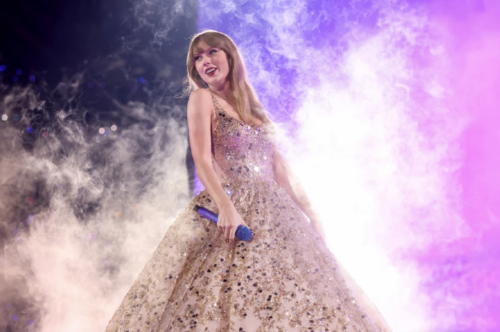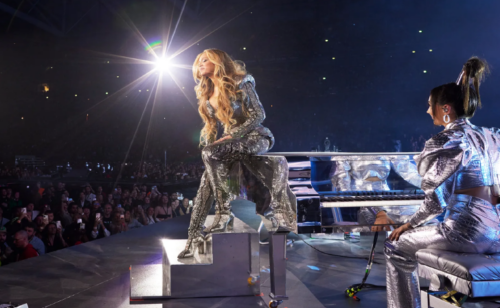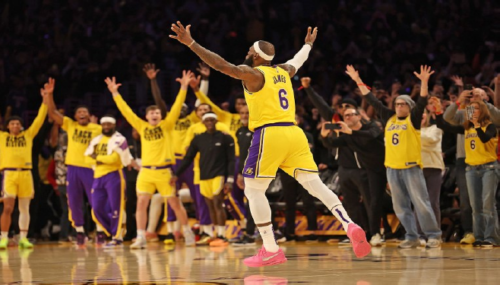

Despite the debates by more cynical naysayers, the truth is that celebrities are one of the most powerful influences on many aspects of our lives. From the Beatles, to LeBron James, to Beyonce, adoring fandoms are quick to pour their adulation and nebulous concepts of artistic perfection or superhuman sports talent into whichever star is currently dominating the musical or sports industry.
The sometimes nearly-religious sway celebrities possess over their fans can spillover into other parts of our world, including economic prosperity, inflation warnings; warranting remarks from the Federal Reserve. Indeed, after the harsh blows of pandemic pressures and the daunting ripple-effects of the continuing Ukraine-Russian war, people’s ardent need to relieve all life’s tensions and enjoy themselves during their favourite artist’s concerts has resulted in one of the largest positive injections into the economy. This is encapsulated by the economic impacts of renowned pop icon, Taylor Swift, and her ‘Eras Tour’, which sheds light on the “superstar phenomenon” at large. This effect, defined as the concentration of extremely high wages attributed to a small group of earners, is seen not only in the music industry, but also sports, which is dominated by “megastar” athletes.
If we pinpoint on artist, Taylor Swift, adored worldwide for her bestseller albums, the US economy, in particular, has been reverberating from the effects of her ongoing Eras Tour. Soaring demand for tickets, skyrocketing prices and limited supply are the defining features of the phenomenon now known as “Swiftonomics”: a simulation or microcosm of the wider economy where spending on services (once-in-a-lifetime concerts in this case) are at an all-time high. Statistics confirm this: the North American leg of the Eras Tour is predicted to generate consumer spending up to $4.6 billion, which in totality far surpasses the GDP of 35 countries.
Moreover, American financial analysts who have studied Swift’s tour, have noted that revenues in the cities where she performs have increased exponentially. A strong linear relationship has been established between music and economic value to the cities where it is performed, since an A-list artist taking the stage drives spikes in job creation and tourism for that city. For example, when the Eras Tour landed in Chicago, the city’s hotel industry experienced 97% occupancy.
It is notable that this is not a new or standalone occurrence: in 1964, a sell-out international tour by the Beatles was pivotal in saving the British economy from recessionary downturn. Consequently, music and economic growth have a lasting symbiotic relationship, mainly attributable to the superstars’ fame and their worth in audiences’ eyes.

Source: NBC News.
Consumer credit rates and inelastic demand form the foundations of “Swiftonomics”. The twin paradox of deep scarcity and colossal demand intrinsic when attempting buying a Swift concert ticket is a sign of inelastic demand, as described by a University of Maryland economist. Demand far outstripping supply in this case has led to fierce competition for tickets, notwithstanding how steep the prices are. For the upcoming Australian leg of the tour, there are seven different price points ranging from $79 to $1250, while elsewhere like the US, dynamic ticket pricing has rendered some fans outraged due to the level of unaffordability. However, as pointed out, the nearly inelastic level of demand does prevail in most cases, as the concerts still sell out completely within mere hours.
On the other hand, a surge in inflation spurred in part by ticket prices and other spending like tourism (flight tickets) and merchandise due to tour frenzy, is also inviting sharper scrutiny into the case of superstars’ income injections into economies, as some financial analysts urge caution.
Inflation has peaked to alarmingly high rates in many countries around the world, and economists worldwide have developed a theory of one of the key culprits contributing to the rates’ steepness: music concerts. The Eras Tour is just one example, but we also have to consider that Beyonce is on her first solo tour since 2016, and the recent resurfacing of famous rocker Bruce Springsteen with his self-titled tour has also directed large sums of money into the entertainment industry, and thereby, into wider national economies. Moreover, in Sweden, Danske Bank’s chief economists are directly targeting Beyonce’s Stockholm concerts when trying to determine causation for the persistence of their high inflation rate. The chief reason is, like the US, a surge in demand for hotels, which skyrockets the prices.

Source: RollingStone.
However, one must also consider the argument against this assertion, called “Tour-flation” by some. Consumer spending is at an all time high, yet it must be noted that spending on live music (however premium), is still only a subset of expenditure on commodities and housing. The overall impact on inflationary pressures must be compared against the bigger picture of the superstar phenomenon.
Another area where the superstar phenomenon holds indelible sway is the sports industry. Certain athletes reach superstar status due to their exceptional talents and record-breaking accomplishments. This also renders them veritable “cash-cows” to their agencies, as their marketability in attracting endorsement deals worth millions of dollars sometimes leads to significant salary increments and bonuses of eye-watering value. For example, American basketball power forward LeBron James brings in an annual salary of $49,511,644 when he signed a two-year contract with the Los Angeles Lakers worth twice this amount.
However, just like music icons, the debate crops up over whether these substantial incomes and contracts are aligned with the wider value to society they actually provide. Such meritocratic compensation illustrates the huge disparity between, for example, the NHL’s top players with other less popular, lower-paid athletes and professionals. It also brings into question whether these large sums of money are flowing due to team success and the athlete’s actual contributions to the sport, or due to the overarching effects of the “superstar phenomenon”.

Source: BashaBearsBasketball.
The question arises: how did Taylor Swift become such an influential figure that her concerts cause spikes in national inflation levels? What leads to football stars like Christiano Ronaldo earning $25-35 million annually, whilst other athletes earn only a fraction of this? Why does one superstar’s influence and attractiveness to fans far outweigh statistical performance of other similar professionals?
The answer: popularity founded on intense marketing, viral media events, and carefully choreographed engagement tactics with devoted fanbases. Another key factor, of course, is the luck of being chosen by audiences as that star, that athlete, who will redefine the genre and who will be the face that generates the next million dollars worth of income. The irreplaceability of chosen superstars, scarcity of performances, and the ambiguous nature of talent itself are also instrumental.
Furthermore, technology and digitization is a thriving, fertile bed for intense marketability of pop stars and athletes by their agencies. The aura and charisma of athletes and artists are propelled to widespread audiences through carefully tailored media coverage that takes full advantage of multiple Internet-based platforms and the minimal costs incurred. In sports, satellites allowing for globalised consumption of games and social media updates of match scores up to the last second lead to reputations of star players continually being enhanced, which in turn enhances the value of entertainment.
However, despite the financial overflows and celebrity magnetism of superstars, broader conversations around wealth distribution and society’s priorities are inevitable. The effects of the superstar phenomenon are multifold, influencing pricing strategies and compensation schemes and even skewing inflation. True, significant injections of income are generated, perhaps even serving to prop up floundering economies, but we must ponder the underlying costs.

Source: FourFourTwo
It is undeniable that human society has always idolised the superstars, the talents, the alleged “unbeatables”. Likewise, it is also undeniable that superstar economics yield great revenue, yet questions of fairness and equal distribution of wealth and popularity are highlighted. Moreover, fan autonomy and agency is also brought into question, for what does it say about the control that superstars and their agencies have over fanbases, when no matter how fiercely tickets rates increase, whether its the Eras Tour concert or a Lakers game, fans will fight tooth and nail for the chance to experience their favourite artist in live performance. Does fan autonomy matter in this case, and are the glaring discrepancies of income in sport and entertainment excusable simply because they produce such vast sums of money? When even society’s ideas of worth and value are shaped by our perceptions of superstars, we are left to ponder whether this phenomenon’s darker side trumps its benefits.
Perhaps the inflationary warnings after Swift and Beyonce’s concerts are a harbinger for a necessary examination of superstar economics. The debate lies in whether mass frenzies over an elite group of high-performers should be allowed to propagate, or whether they should be curbed with the goal of achieving stabler economies and more equitable compensation for talent.
The CAINZ Digest is published by CAINZ, a student society affiliated with the Faculty of Business at the University of Melbourne. Opinions published are not necessarily those of the publishers, printers or editors. CAINZ and the University of Melbourne do not accept any responsibility for the accuracy of information contained in the publication.